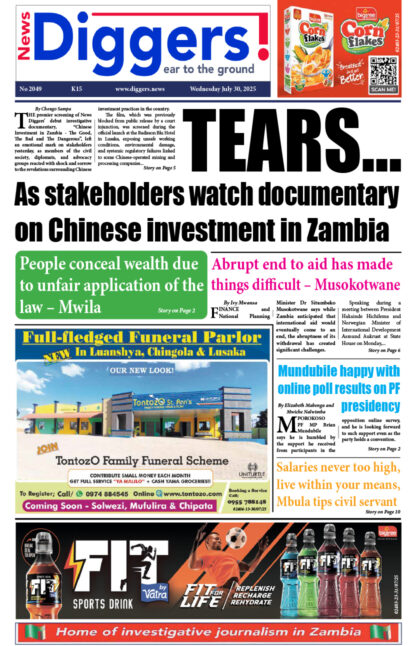The months of October and November 2018 have seen sharp declines in the price of oil on the global market. The commodity is now trading at just over $50 per barrel from as high as $75 at the beginning of October. In a typical market setup, consumers should have been crying to petroleum dealers to also reduce the pump price. But alas, it is the Energy Regulation Board (ERB) to dictate. So why is it like this? In this article, I try to look at the rationale for price fixing by ERB and argue that in this era and age, there is no justification for ERB to employ this extreme mode of price regulation.
The balance or imbalance between the number of sellers and buyers in a market gives room for exploitation. On either side, buyers or sellers, the bigger the number the less influence an individual player has on the price determination. The influence in this sense refers to an individual player’s ability to set a market price or at least influence its setting. The amount of influence will depend on, inter alia, what others call market concentration.
When a market has a single seller, called a monopoly, the seller enjoys control on the price. They can decide to increase or lower at will. With little or no alternatives available to buyers, the buyers are stuck with the exploitative seller. This could have been the case with ZESCO whose product has no close substitute. In order to prevent such exploitation of consumers, regulation of the price is enforced. Today, every Zambian knows that the ERB determines how much ZESCO will charge for electricity. When there are few more sellers, competition will ensure that no single seller exploits consumers. Consumers can now switch from one supplier to another. I will refer readers to what happened to Post and Telecommunications Corporation (PTC) and Zamtel with the coming of Telecel (now MTN) and Celtel (now Airtel) on the market. When PTC (Zamtel) was alone on the market, it was easy for them to disconnect or suction ailing customers and would employ all sort of bureaucracy on reconnections. This story or experience is still well known. Not only has the service improved but the prices of the services has also gone down.
In some markets, it is the buyers that are few in number. This enables the few to have considerable influence on the price and therefore be able to exploit the situation to their advantage. This is often the case in the cotton subsector. While there may appear to be many buyers of cotton, their cooperation and partitioning of the market coupled with contract farming emanating from input supply restricts the number of buyers for each farmer. A cotton farmer faces only one potential buyer. The buyers set prices, and however bad, the farmer has no choice but to sell. We saw sharp reductions in the price around 2012 leading to some protests by farmers. We saw slogans of ‘boma ilanganepo’ surfacing and in some extreme cases, farmers burning their already harvested cotton to ashes. The reason stakeholders were calling for government intervention was because of an imperfect market, one with few buyers.
As we can see from the foregoing, price regulations is necessary in a number of cases but not in all scenarios. Regulation is necessary when the market is not competitive enough often arising from too few sellers or buyers. Other imperfections such as information asymmetry associated with the market for healthcare do not always necessitate price regulation. This is why private healthcare providers are at liberty to charge any fees. Regulation ends on setting ‘rules of engagement’.
A look at the fuel subsector will show that the market has thousands of buyers, sufficient to prevent any single buyer from having individual influence on the price. The supply side has also seen a growth in the number of oil marketing companies (OMC) and fueling stations especially in big towns or along the line of rail. There are more OMCs than telecommunications companies, probably as many OMCs as are milling companies. This comparison, good or poor, is meant to give an indication on how many is many-enough. The number of OMCs and dealers is more than what a consumer needs to choose from, sufficient to guarantee fair competition in the market.
Given a chance, the market is probably capable of setting a better price in the fuel market. I say better in the sense of a price that would be affordable to consumers but also high enough to ensure sustainable supply. The ERB has for many years failed to find this price and it is certainly not a one-price-fits-all places. Having one price for all corners of the country is surely problematic. This is because the market conditions in Lusaka will not apply for instance in Sinazongwe. Forcing everyone to sell at the same price simply forces all OMCs to fight for trading space in Lusaka and other towns along the line of rail. What happens to off-the-grid towns? To date, many remote districts or town have no presence of fueling stations.
The last time I travelled to Zambezi, I was told to carry extra fuel using unconventional means because there was no reliable supply of the commodity beyond Solwezi town. Profitability is low in these towns: first because of low demand for the commodity which is a natural phenomenon. Second, the profit margin is also low because of price regulation given a high transportation cost. Unless government bears the transportation costs, the private sector is unwilling to incur extra costs for no extra revenue. We know ERB has established regional depots but this has not sufficiently equalized the supply cost as evidenced by lack of reliable supply in remote towns.
I have also taken the liberty to check around the globe on how other countries are managing the pricing of fuel. Information is scanty but Global-Petrol-Prices considered 97 countries of the world and found that in more than 60 percent of the countries, the price was market determined. These included big economies such as US, UK and also small economies such as Uganda. In 15 percent of the countries, regulation was limited to price ceiling. This is where the regulator sets the maximum prices. Only about 24 percent of the countries employed the most extreme form of price control, fixed price. This is where Zambia is. While there may be partner countries doing the same, the vast majority of countries in the sample are doing it the other way. It is possible that if all countries were taken into consideration, the scenario could have been different.
Going forward, there is need to rethink the role of regulation in the fuel subsector. In any case, the 2008 National Energy Policy sought, inter alia, to improve petroleum pricing by ensuring full price deregulation and competition at the pump as well as ensuring low cost retailing in rural areas. This is an indication that government long realized the need to liberalise the market. There is a possibility that the market is now well established and efficient enough to set appropriate prices, prices that will ensure supply everywhere in Zambia, all the time. Zambia does seem to have strong justification to warrant continued fixing of the price by the ERB. In any case, Zambia is among the few countries that have maintained this practice.
(Obrian Ndhlovu is an UNZA lecturer of economics)



















